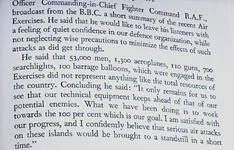wuzak
Captain
The Historical timeline of the Merlin and V-1710 is fairly close.
However, in Tomo's proposal, the Merlin failed to go introduction - so why wouldn't Britain take a look at Allison's engine for a potential license?
Not Invented Here?
I was unsure as to whether you meant that Allison would produce the engine or it would be produced in the UK.

